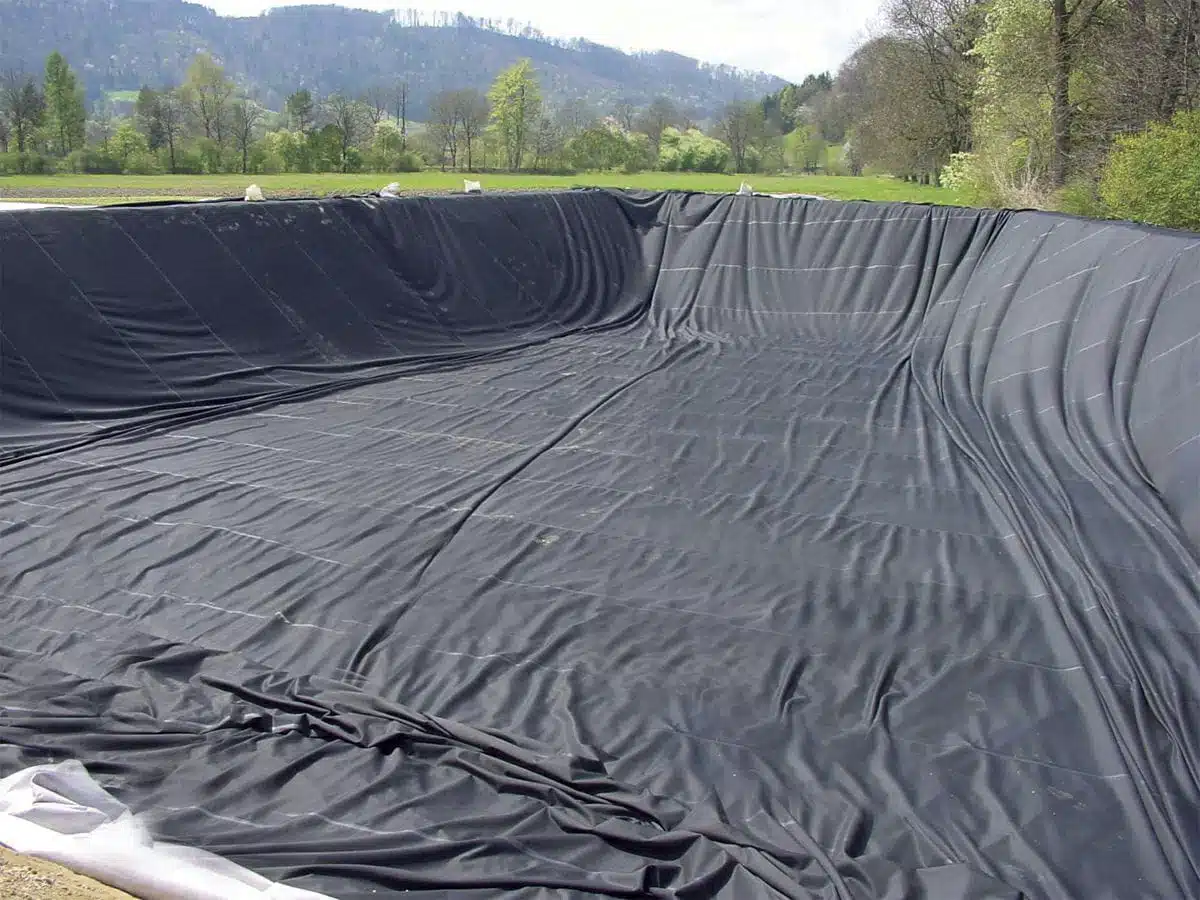+86-159 9860 6917
info@geofantex.com
geofantex@gmail.com
+86-400-8266163-44899
Geomembranes are an essential material in pond construction, providing waterproofing and preventing contamination of water bodies. As an impermeable material used to line ponds and other bodies of water to contain liquids, geomembranes ensure that water stays contained within the pond while also protecting the surrounding environment. When it comes to creating a durable and effective pond, choosing the right liner is crucial. This article will explore the differences between geomembranes and pond liners, explain what a pond liner is, compare HDPE and PVC pond liners, and discuss the broad applications of geomembranes. Let’s dive into the details.
What is the difference between a geomembrane and a pond liner?
A geomembrane is a type of synthetic material that is used primarily for lining and containment in various applications such as landfills, ponds, and wastewater treatment. It is designed to prevent fluid or gas leakage and provides a barrier against contamination. A pond liner, on the other hand, is a specific type of geomembrane designed for lining ponds, especially to keep water from seeping into the ground. While all pond liners are geomembranes, not all geomembranes are suitable for pond construction. Geomembranes are a superior choice compared to packed clay, as they offer better flexibility, durability, and resistance to punctures and environmental conditions. Geomembranes used for ponds are typically thicker and more flexible, allowing them to withstand the forces of water, environmental conditions, and potential punctures.

What is a pond liner?
A pond liner is a waterproof barrier placed on the bottom and sides of a pond to prevent water from leaking into the surrounding soil. An impermeable geomembrane used for the retention of liquids, pond liners can be made from a variety of materials, including rubber, PVC, and geomembranes like HDPE and LDPE. Pond liners are essential for ensuring that water stays in the pond, especially in locations with porous soil or areas prone to evaporation. They also help maintain water quality by preventing contaminants from seeping into the pond.
What is the difference between HDPE and PVC pond liners?
- HDPE (High-Density Polyethylene) and PVC (Polyvinyl Chloride) are both common materials used for pond liners, but they have key differences:
- Durability: HDPE is known for its superior resistance to punctures and tears, making it highly durable in environments where the pond liner will be exposed to rocks, roots, or other potential hazards. The HDPE pond liners are resistant to UV, oxidation, chemical reactions, tear-resistant, and puncture-resistant, which makes them particularly suitable for long-lasting pond applications. PVC, while flexible, is more prone to damage from sharp objects.
- Chemical Resistance: HDPE offers better resistance to a wide range of chemicals and environmental factors such as UV radiation, which makes it ideal for long-term pond applications. PVC is more susceptible to degradation from sunlight and harsh chemicals.
- Cost: PVC liners are generally more affordable than HDPE, but their shorter lifespan and lower durability might lead to higher maintenance costs in the long run.
- Installation: PVC liners are easier to install due to their flexibility, while HDPE requires welding or mechanical sealing for installation, which can be more labor-intensive.
In summary, HDPE is better for long-term, high-performance applications, while PVC is a more budget-friendly option for smaller or less demanding ponds.
Where are geomembranes used?
Geomembranes are used in a variety of applications beyond pond liners. Some of the most common uses include:
- Landfill Liners: Geomembranes are often used to prevent leachate from landfills from contaminating the surrounding soil and groundwater.
- Water Reservoirs: They are used to line reservoirs and irrigation ponds, ensuring that water is contained without leakage.
- Wastewater Treatment Plants: Geomembranes are applied in the construction of containment systems for wastewater treatment.
- Mining Operations: They are used in heap leach pads to contain chemicals and minerals, ensuring safe containment during mining processes.
- Environmental Remediation Projects: Geomembranes create barriers around contaminated sites to prevent further spread of pollutants.
- Waste Liquids Containment: As liners for waste liquids (e.g., sewage sludge), radioactive or hazardous waste liquid, geomembranes play a crucial role in safely containing and preventing the spread of harmful substances.
Their versatility, durability, and chemical resistance make geomembranes an indispensable tool across a wide range of industries.
Geomembrane pond liners play a crucial role in ensuring the longevity and efficiency of ponds, preventing water leakage, and maintaining water quality. While geomembranes are often used in various containment applications, they are particularly important in pond construction due to their ability to withstand environmental stress. Understanding the differences between materials like HDPE and PVC can help you select the best liner for your pond’s specific needs. Whether you are building a small decorative pond or a large water reservoir, choosing the right liner is essential for a sustainable and effective solution.



Get Free Sample
We’ll respond as soon as possible(within 12 hours)






















